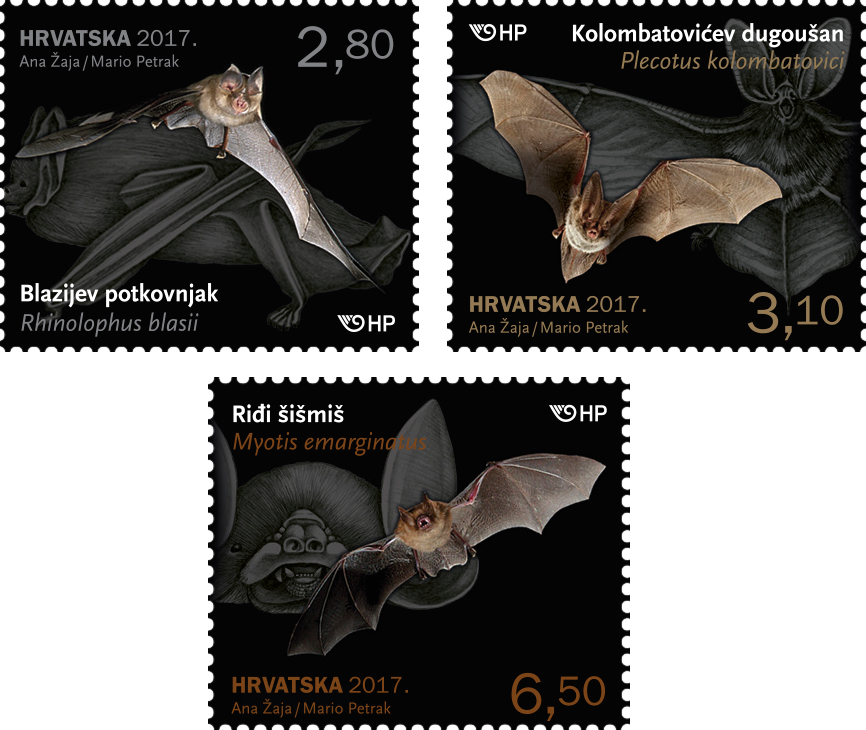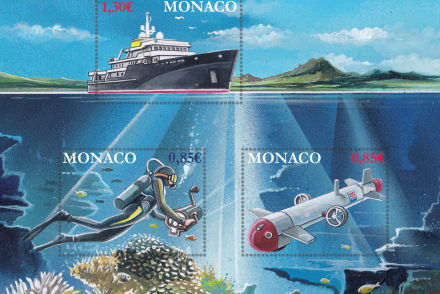Croatian Fauna- Bats
Croatia – Blasius’s horseshoe bat, Rhinolophus blasii Peters, 1866
A bat from the horseshoe bat family (Rhinolophidae) which all have a characteristic skin growths that distinguish them from other families and each other. Blasius’s horseshoe bat is the rarest species of horseshoe bat in Croatia. In addition to the findings on the islands of Cres, Krk and Rab, it is limited to underground shelters (caves and pits) in the interior of the Mediterranean region. As the species is considered extinct in Slovenia and Italy, findings in Croatia represent the northern border of this widespread but rare species. Specific echolocating high frequency signals are clear determining feature of the species and are used for orientation and hunting of insects. It hunts in undergrowth (shrubs) and forests, whose destruction, along with the disturbance and destruction of underground shelters threatens this species. In order to preserve the species it is of utmost importance to protect their hunting habitat as well as the underground facilities in which its winter and summer colonies reside.
Mediterranean long-eared bat, Plecotus kolombatovici ?uli?, 1980
Mediterranean long-eared bat is the smallest of the four species of this genus in Croatia. It was described and discovered by Batrica ?uli?, Ph. D., professor who named it after the famous bat explorer professor Juraj Kolombatovi?. The characteristic of this bat genus are extremely large ears which are used for orientation and listening for prey. It is spread only on the coast, and on the Adriatic islands it is the only species of long-eared bats. Summer colonies are found in the towers of churches and the largest known is the one in the Boljun church in Istria. Its wintering grounds are unknown. At night it hunts mostly within forest stands, often flying low at the edge of the garrigues and hedges. The hunting habitats are generally placed within 3 km from the shelters. The relatively small populations on the islands, rare findings located on the coast and dependence on anthropogenic shelters (attics of churches and houses) are the reasons why Mediterranean long-eared bat is endangered species.
Geoffroy bat, Myotis emarginatus (Geoffroy, 1806)
A typical representative of murine bats (family Vespertilionidae) that distinguishes from other species with its distinctly reddish fur on its back and the characteristic ear notch. The species is widespread but prefers warmer regions. Hence, the largest colonies in Croatia are found in caves and under roofs on the coast, and according to current information, it is one of most numerous populations of this species in Europe. Geoffroy bats often occupy only a dusky or even well illuminated parts of cave entrances, and are very sensitive to disturbance. In the continental Croatia, only smaller colonies are known to be living in the roofs of buildings. In the winter only individual appearances were recorded in caves. Geoffroy bat is the forest resident and it takes a variety of invertebrates off the twigs and leaves of trees and shrubs. The species is endangered by disturbance and destruction of maternity shelters in houses and caves and by hunting habitat fragmentation.
Technical Details
Issue Date: 21.03.2017
Designer: Authors: Ana Žaja Petrak and Mario Petrak, designers from Zagreb
Printer: AKD d.o.o., Zagreb
Process: Multicolor Offset Printing and Varnish Coating
Size: 35.50 x 29.82 mm
Values: 2.80, 3.10, 6.50 HRK




